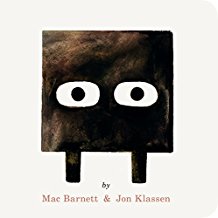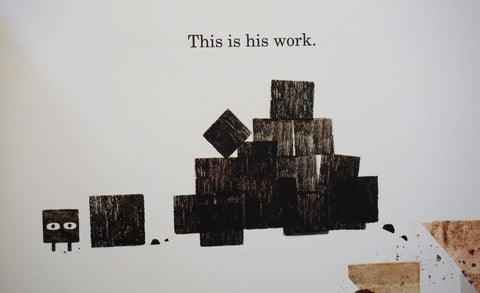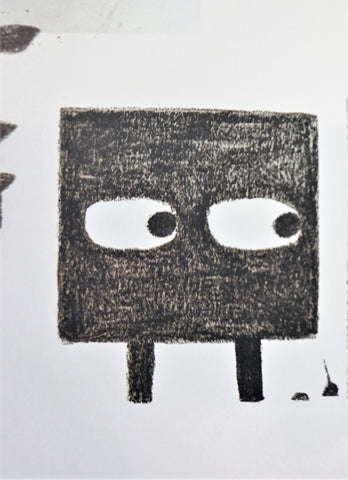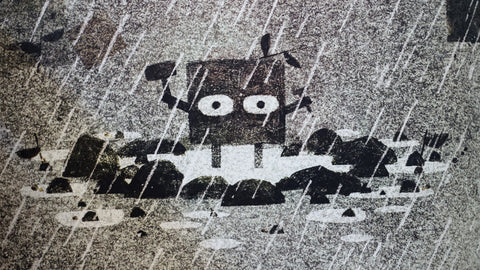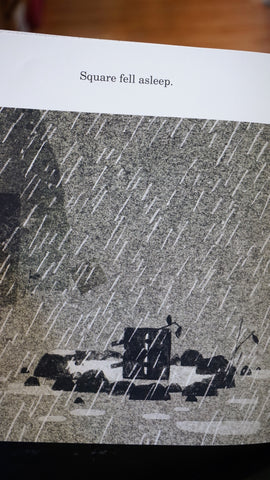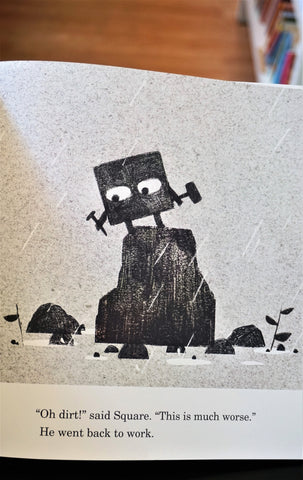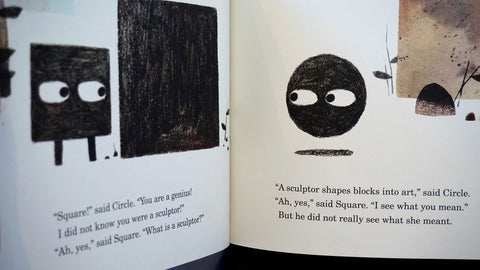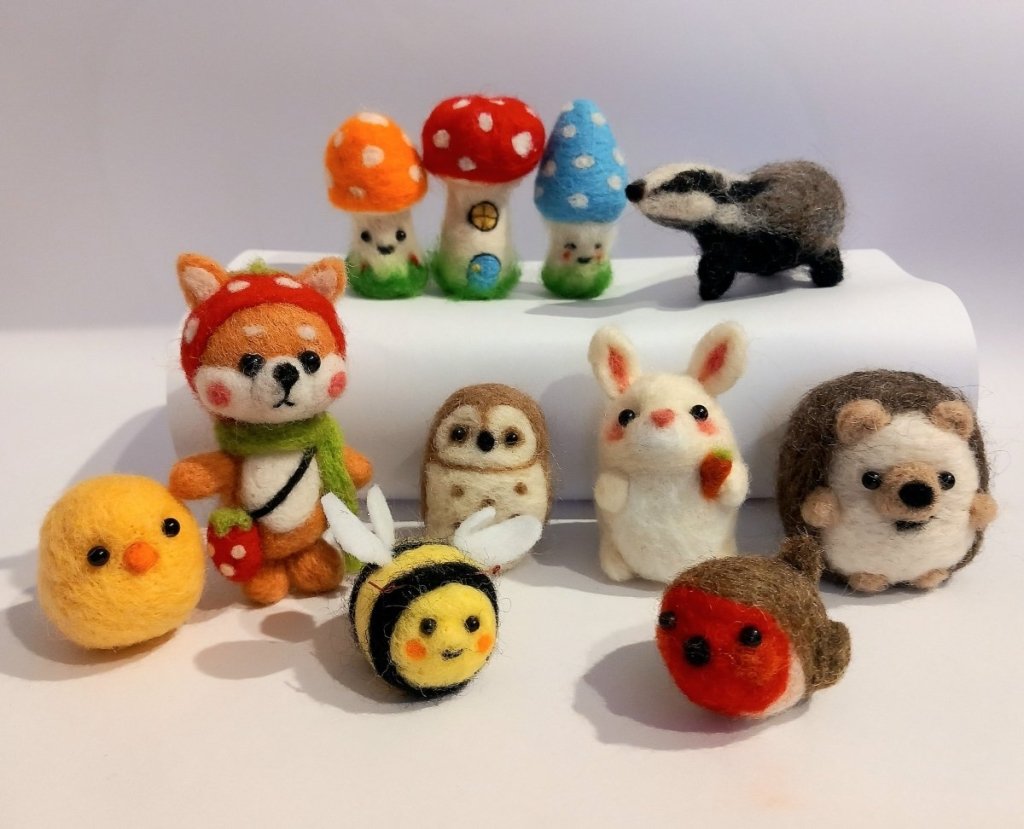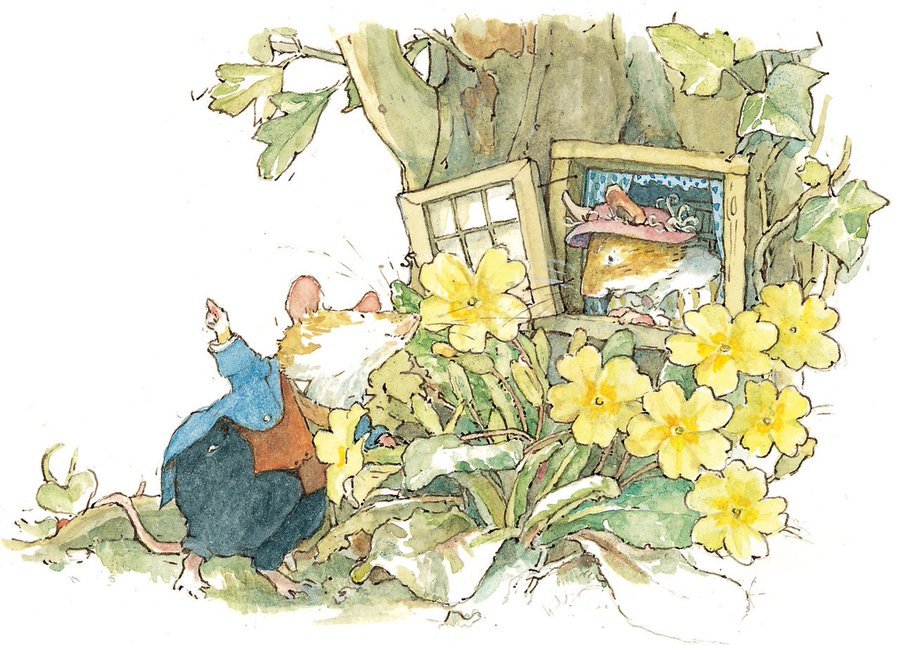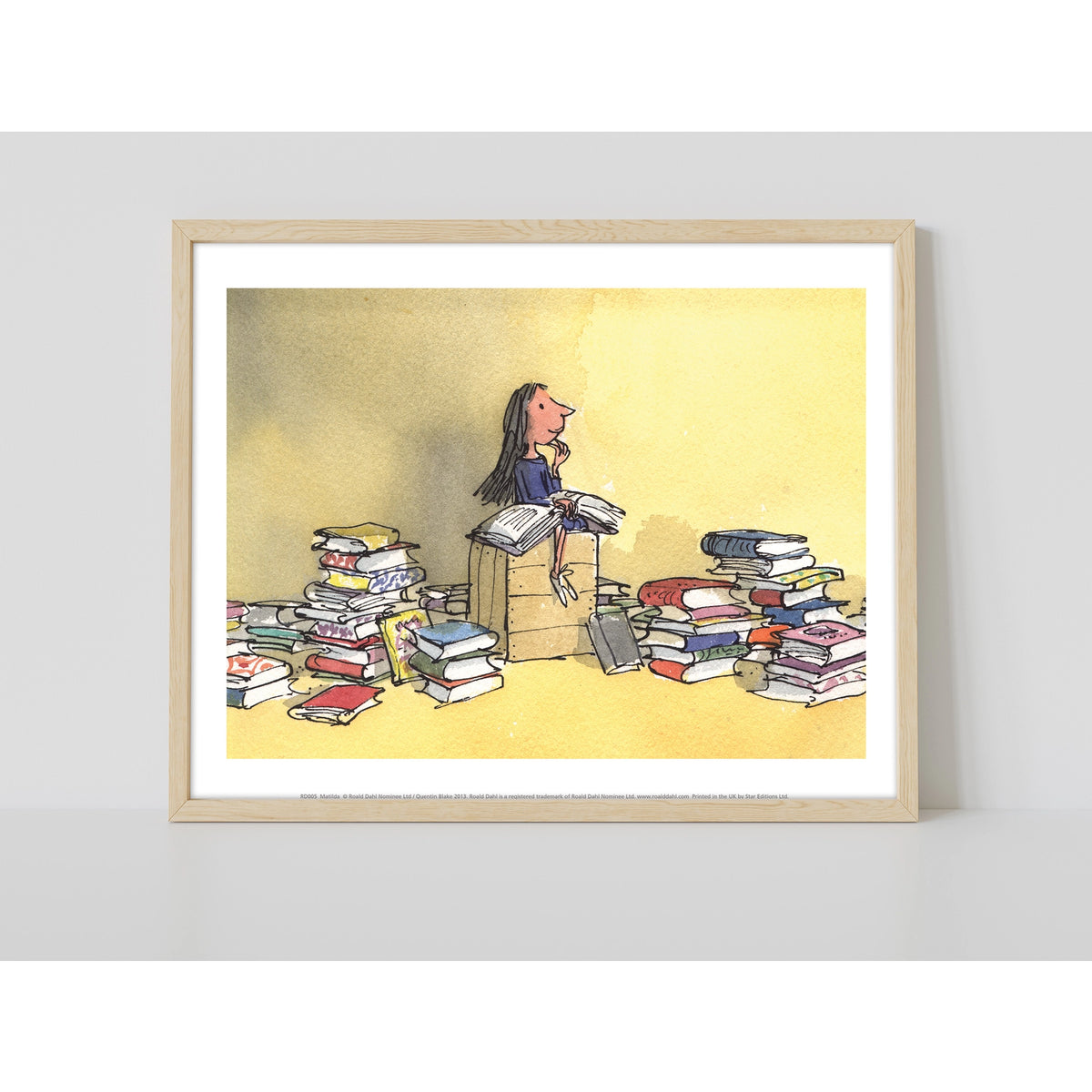What "Square" Taught Us About Art
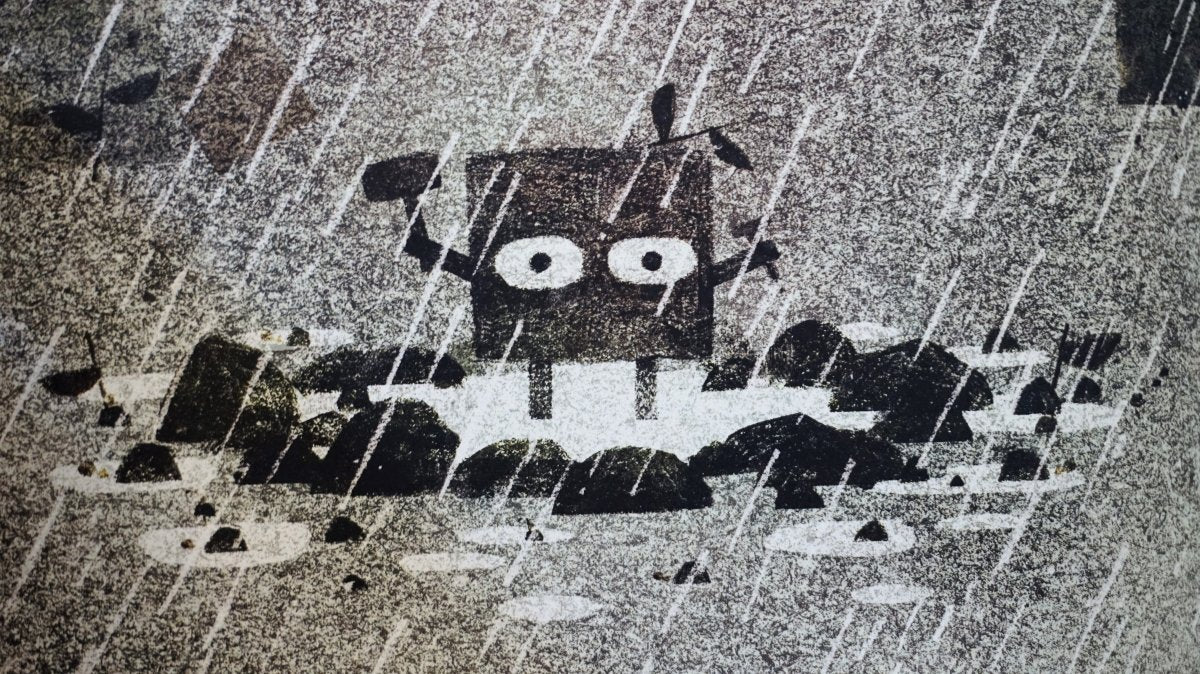
Anyone who has ever been to Tales for Tadpoles knows how much we love Jon Klassen! This Canadian illustrator was the focus of one of our very first Illustrator of the Month blogs, and he makes up one half of the dynamic duo of modern children’s books, along with the writer Mac Barnett. Their latest collaboration, Square, is the sequel to Triangle and the second instalment in what will be a shape-based trilogy.
Square is a very special book, not only because it displays Klassen and Barnett’s now iconic sharp sense of humour and unique aesthetic, but because it manages to fit an important art history discussion into a 36 page picture book! Like all of Klassen and Barnett’s books, it can be read on many levels and enjoyed by both adults and children. Here are some of the reasons we think Square is not only a hilarious picture book, but also a profound meditation on the nature of art!
Square asks the question, does art need to be created specifically, or can anything be art?
Square is a character who spends his days pushing inanimate squares up a hill. This is his work. But when Circle comes along, she sees Square’s everyday shapes as works of sculpture. Sometimes naming something as art is all it takes for us to suddenly see it in a whole new light. If Square is an everyday working shape, Circle is the gallery owner who sees his work, puts it in a museum and declares him a star!
The artist Square and his "ready-made" art pieces.
Circle could well be a fan of Marcel Duchamp, a twentieth century French-American artist who turned the art world on its head when he displayed “ready-made” items like urinals and spades in galleries, and called them art. Maybe Square’s blocks will hang in New York City's Museum of Modern Art one day too.
Some artworks only become finished by “accident”.
Displaying ready-made objects as scupture is not the only similarity between Square and the modern artist Marcel Duchamp. Both Square and Duchamp considered their pieces unfinished until an accident made them complete.
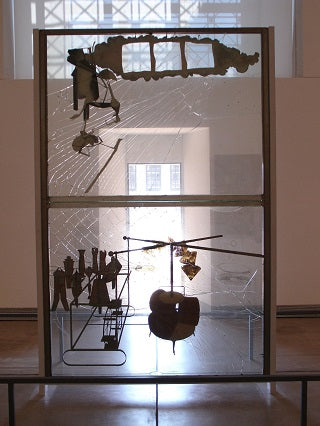
The Large Glass, an art piece by Marcel Duchamp
Duchamp started this glass sculpture in 1915. It’s officially called “The Bride Stripped Bare By Her Bachelors, Even”, but, standing at 9 feet tall, it is most often simply referred to as “The Large Glass". Having worked on it for eight years, Duchamp stopped adding to the piece in 1923. However, instead of declaring it finished, he felt it was still missing something and announced that the work would be displayed as unfinished.
Two great artists contemplate one another: left, Square, right, Marcel Duchamp.
In 1926, while the piece was in transit from an exhibition to a collector’s house, it was accidentally damaged, sending a huge crack through the glass. Marcel Duchamp, delighted with this spontaneous addition to his work, finally declared it finished! When Square falls asleep in the rain, he doesn’t consider that the rain could be an important addition to his artwork. But his panic at his sculpture of Circle being unfinished is assuaged when Circle notices her reflection in the rain which has pooled in Square’s haphazard circle of rocks. Like Duchamp’s piece which was accidentally finished by a crack in the glass, Square’s sculpture is finished accidentally by the rain.
Genius is in the eye of the beholder
Circle asks Square to make a sculpture of her, which she will come back for tomorrow. And Square panics! He falls asleep in a circle of rocks that he has whittled away to nothing, and wakes up soaked with rain, with Circle on her way! But when Circle sees her reflection in the puddle of water Square has unwittingly collected in the rocks, she is amazed at his talent. Sometimes the artist themselves can have no faith in their own work, and it takes someone else to acknowledge its greatness in order for them to see that their work is important.
As well as being a lesson in art history, Square is a very accurate reflection of the process of creativity! Through our empathy for Square we gain an insight into the life of every modern artist.
The creation of great art is usually filled with panic and self doubt
Jon Klassen is known for the expressive simplicity of his character design. While his characters’ bodies remain still, he uses their eyes to express what they’re feeling. This moment of pure panic in Square’s eyes is instantly recognisable to a freelance artist, or anyone who has ever worked to a deadline. As is this next moment…
There is a delicate balance between knowing when something is finished and overworking it.
After Circle asks Square to create a portrait of her, Square gets to work on his block, trying to shape it into a sphere. But he ends up chipping away at it so long there’s soon nothing left! Many artists speak about the struggle of knowing when something is finished versus adding too much to it and ruining it.
No one really knows what they're doing
This exchange between Square and Circle seems like it could be happening at a gallery opening, or the lecture hall of an art history class. Mac Barnett’s witty, minimal wording lets us into the secret that Square really has no idea what Circle is talking about when she starts talking about art. And we immediately love Square for it! The secret of the art world, and the world of adults in general, is that no one really knows what they're doing.
Jon Klassen and Mac Barnett’s books are fun for both adults and children because they always leave some things open for the reader, they allow both children and adults to make up their own minds about what has happened. In Klassen's debut I Want My Hat Back, we’re allowed to speculate on the fate of the rabbit who mysteriously disappears at the end of the book.
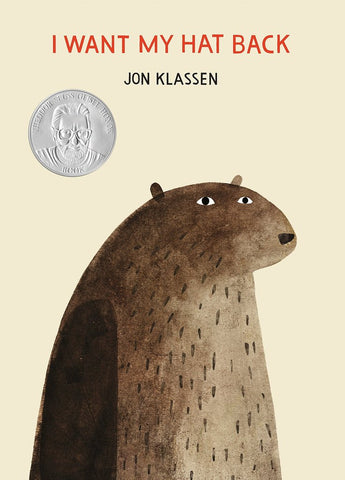
And in Sam and Dave Dig a Hole, even the youngest readers can notice details in Klassen's illustrations that aren’t alluded to in Barnett's text.
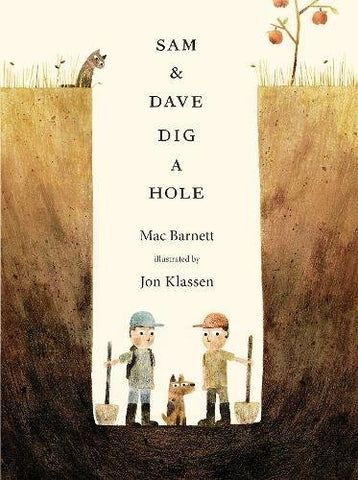
Square is no different; the book ends with a question addressed to the reader. After Circle declares Square a genius for his accidental artwork, the book asks, “But was he really?” What do you think, is Square a genius, or is he just a square? Leave a comment below and let us know!
You can buy Square here, and be sure to have a look at all of Mac Barnett and Jon Klassen’s other brilliant books.
